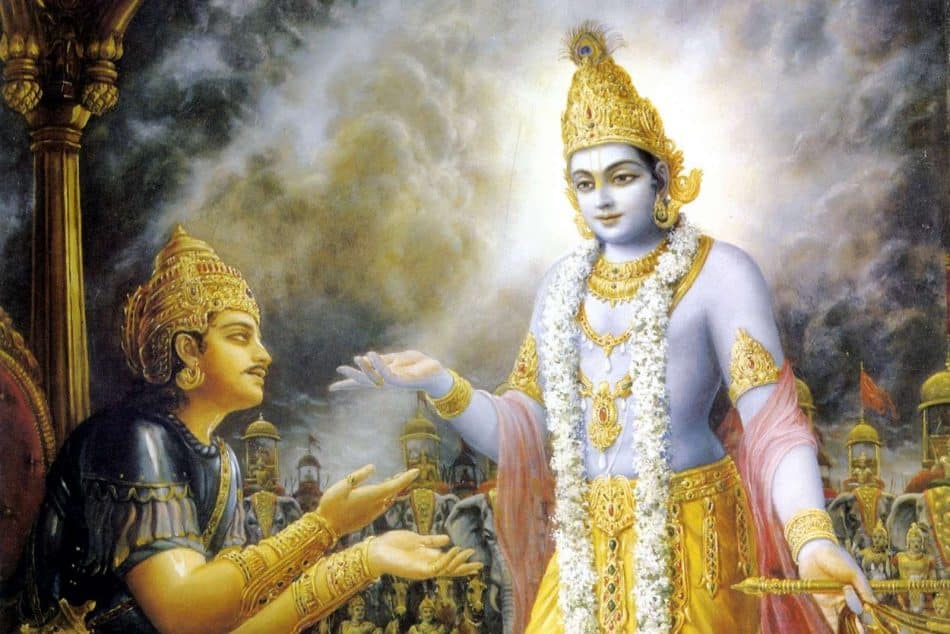The concept of Sanatana Dharma and reincarnation might have the same birth date. For those indulging in religion, reincarnation is a theological doctrine. Reincarnation is a fact for learned Hindus.
There is certain evidence that supports the claims of reincarnation. But mainly, they can be categorized into two:
- Jatismaras – the people who can remember their past, and
- The testimonies in different scriptures and saints.
Reincarnation in Hinduism
Most of the references to reincarnation come from Hindu literature. If one reads the Bhagavad Gita, Sri Krishna says to Arjuna, “Arjuna, both you and I were born many times in the past. You do not remember those births, but I remember them all.” Here, Sri Krishna can be labeled as the Jatismara.

As things have gone by, both believers and non-believers of reincarnation have shown rare traits of remembering their past lives. The numbers are pretty small. However, the claims have been investigated and verified several times.
There are certain things that only the doctrine of reincarnation can explain. For instance, the intelligent and genius child prodigy Mozart cannot be explained by heredity or genes only. The doctrine of reincarnation can explain it whereby the prodigy could have been an accomplished musician in the last birth and carried those traits to this incarnation.
The Ultimate Question: Why do we Reincarnate?
According to Hindu dharma, when people die, unfulfilled desires are primarily responsible for our rebirth. However, to truly understand it, one must understand the Hindu perspectives about death and life after death.
Dual bodies: Gross and subtle
Hindu dharma says there are two forms of the human body: the gross and the subtle. When we talk about the gross body, it refers to the physical body. The subtle body refers to the mind, intellect, sense organs, and vital energy.
Considering the sense organs, our eyes, ears, skin, tongue, and nose are not the real sensory organs, according to Hinduism. Instead, they are the senses of sight, hearing, feeling, tasting, and smelling to establish a connection to the external world.
Death and the Lokas – the Different Planes of Existence
The Hindu doctrine explains that the gross body is left behind when a person dies while the subtle body travels to a different plane of existence. This plane of existence is called Loka in Sanskrit. The three common Lokas, according to Hindu dharma, are Swarga, Martya, and Patala. There are innumerable planes of existence. The other lokas have the same space in relation to the earth plane – Bhurloka.
Kaushitaki Upanishad says that the seven higher lokas: Brahmaloka, Prajapatiloka, Indraloka, Adityaloka, Varunaloka, Vayuloka and Agniloka.
Others talk about various other lokas: Satyaloka, Tapoloka, Maharloka, Janaloka, Swarloka, Bhuvarloka, Bhurloka, Atalaloka, Vitalaloka, Sutalaloka, Rasatalaloka, Talatalaloka, Mahatalaloka, and Patalaloka. These are the only selective list and not an exhaustive one since the number of lokas are infinite. (Vedic version of the Planetary System – Vedic Cosmology)
The higher and lower lokas are compared to Bhurloka. Hindus claim that the higher lokas are spiritually blissed, while the lower lokas are filled with suffering. The subtle body can only experience spiritual bliss and suffering. If the subtle body is pure, then they travel to higher lokas. Otherwise, they travel to the lower lokas. The level of their karma measures pureness.
Unfulfilled Desire and Rebirth
When people have extremely strong desires that go unfulfilled as they leave, their mind or the subtle body as they travel to another world strongly yearn to fulfill those desires. As part of the process, those desires will bring them back to earth, thus leading to rebirth or incarnation.
Let’s take an analogy to understand this better. Say you are extremely fond of a lavish dish exclusively served only in one restaurant an hour’s drive away from you. When you keep thinking about and yearning for the dish, it drives you one day to get in your car and drive an hour to get that dish. The same is the urge for the departed souls who try to fulfill their desires on earth and thus bring them back to the earth.
An Opportunity for Spiritual Progress
Reincarnation allows us to evolve in the spiritual world as we undergo several incarnations. When the acme of spiritual progress is reached, we realize God and go beyond all the other desires. The soul can even transmigrate, according to Hinduism.
Until liberation or moksha, it is normal for a soul to progress through several reincarnations. Sometimes, a soul might undergo very bad karma, and when that works out, the soul can incarnate again to go through the gradual spiritual evolution.

Evolution of species and reincarnation
Most argue that if we believe in reincarnation, then the number of human beings on earth should have decreased rather than increased since many souls reach moksha and are liberated that they do not even reincarnate. However, each human soul can reincarnate as a subhuman being in the course of evolution. As such, human beings can increase in number. Be it the human soul or the subhuman soul; divinity exists in all. Else, the idea of God’s omnipresence is violated.
The founder of the Ashtanga Yoga system, Maharishi Patanjali, says that one species can evolve into another where circumstance changes and creates a suitable environment for evolution. This is called Jatyantara Parinama, and this means that evolution is supported by the concept of reincarnation too.

